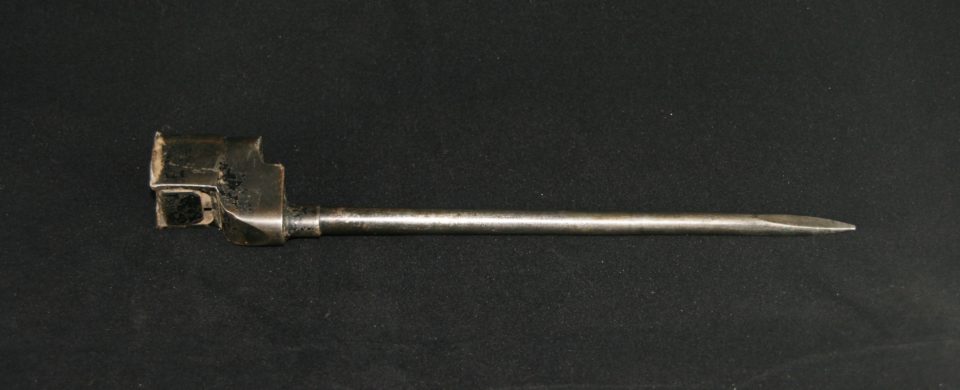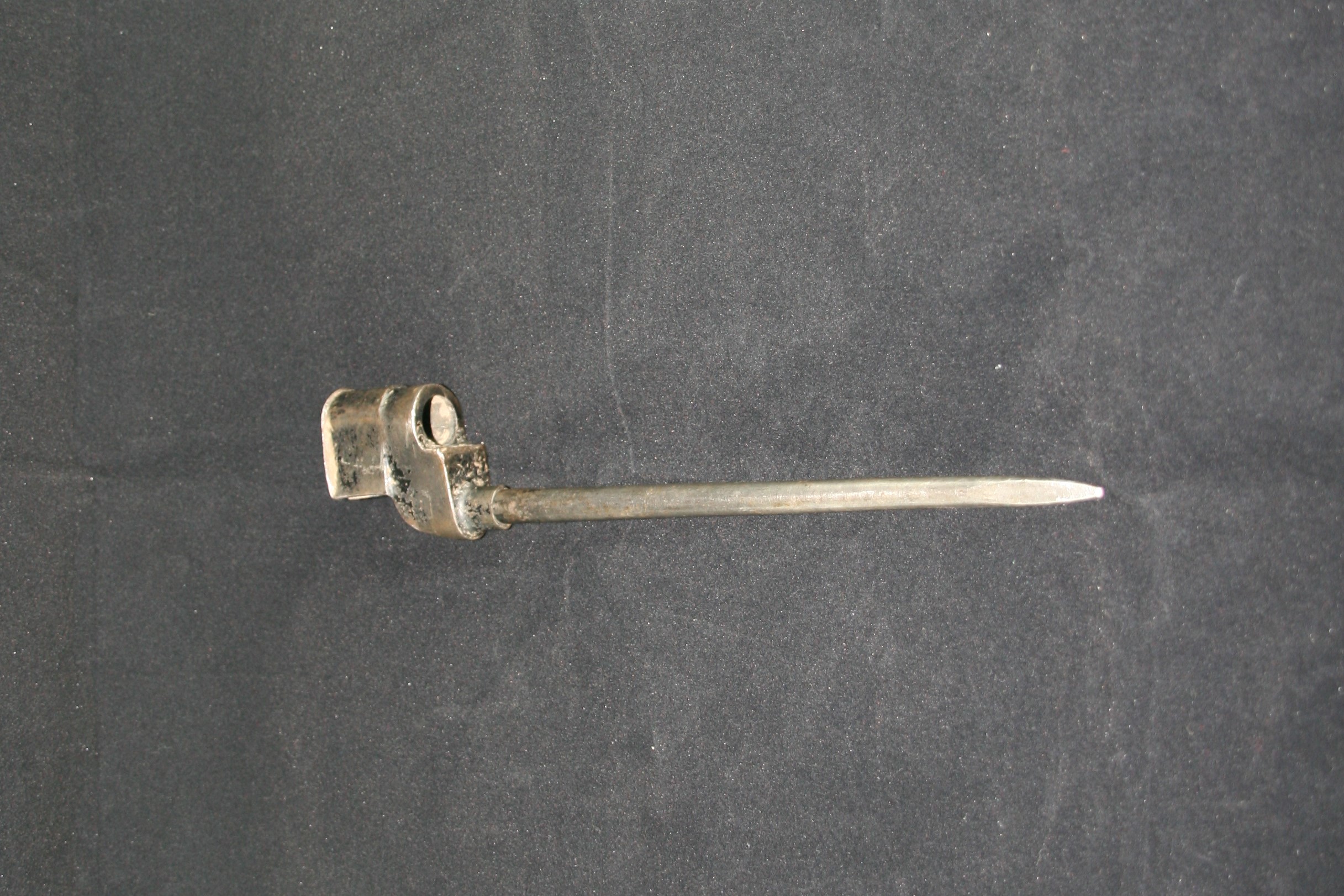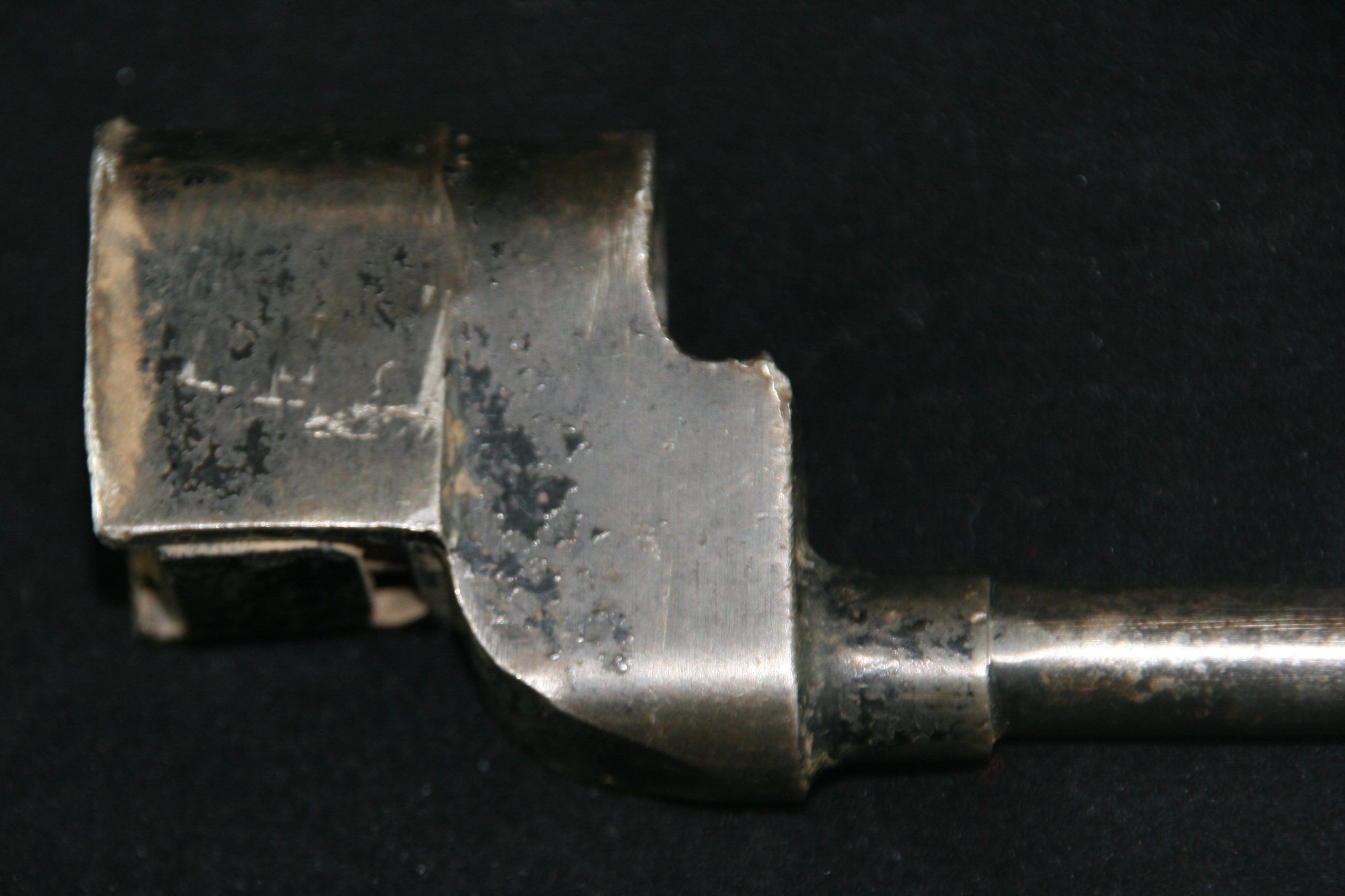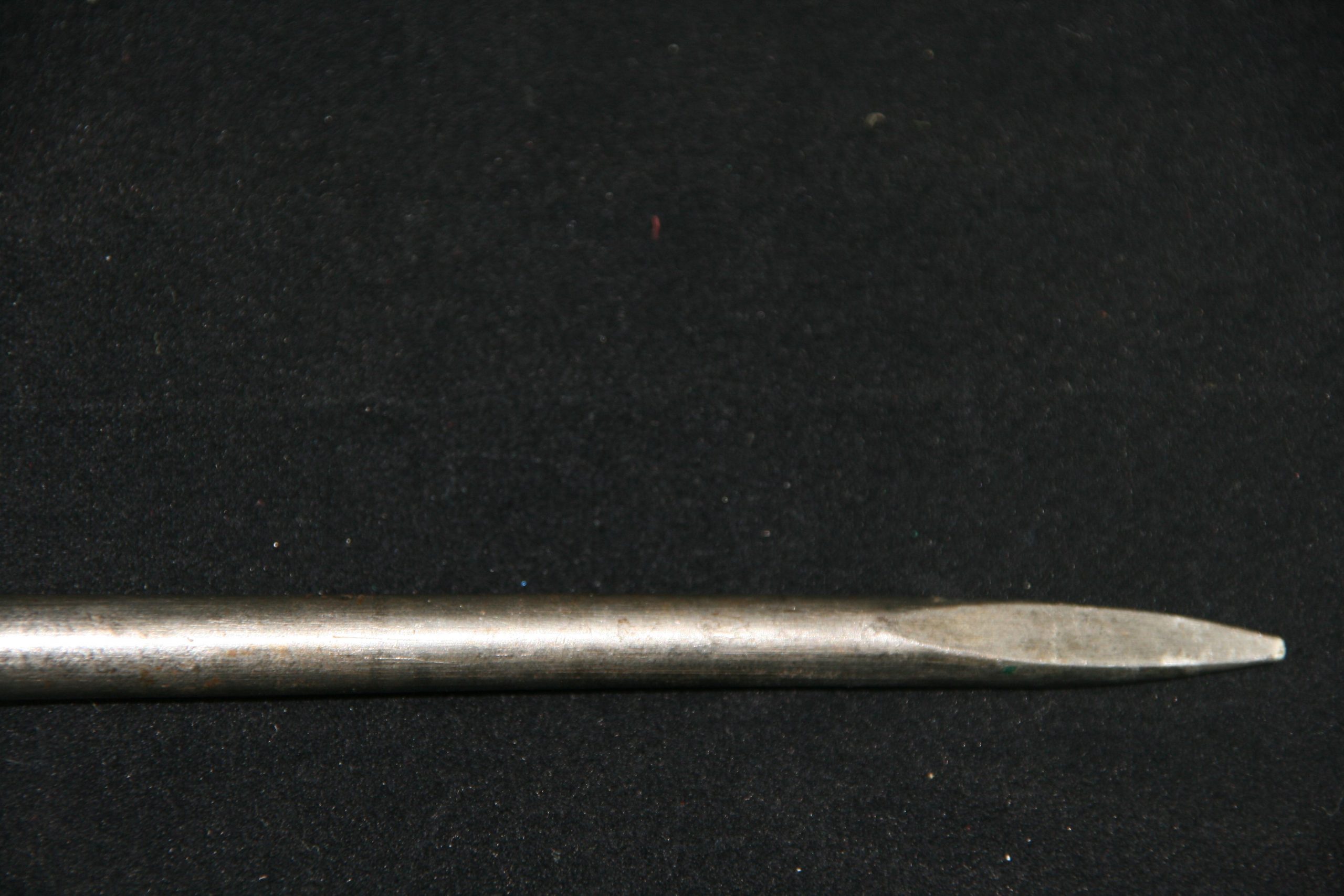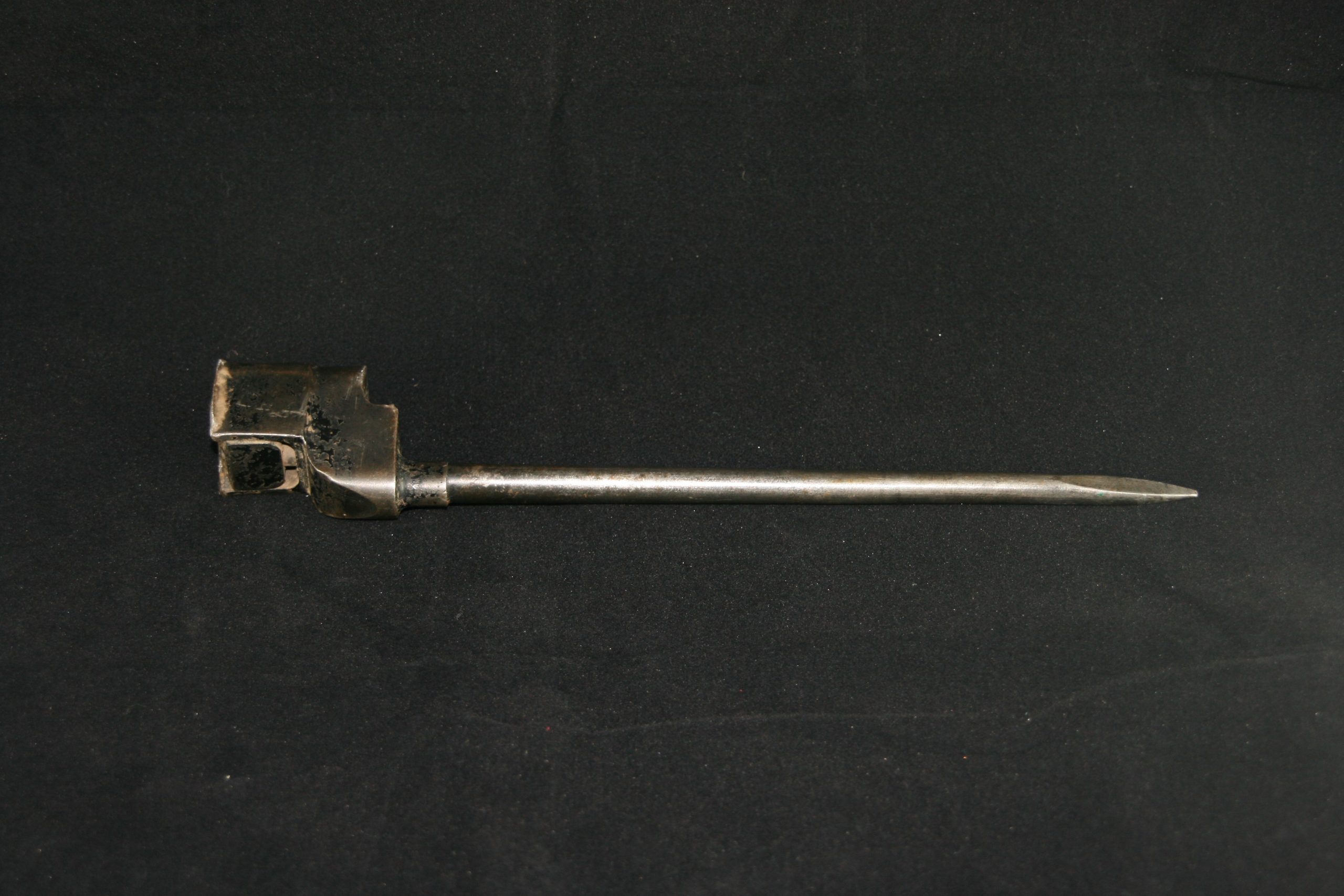No. 4 Mk. II Spike Bayonet
- You are here
- Home
- Museum blog Museum Objects
- No. 4 Mk. II Spike Bayonet
With so much modern technology available to today’s infantry soldier, it is difficult believe that the bayonet is still needed. However, in 2004, soldiers from The Argyll and Sutherland Highlanders, along with reinforcements from The Princess of Wales’s Royal Regiment, were engaged for three hours in fierce and bloody hand-to-hand fighting with bayonets fixed against Shi’ite militia in Southern Iraq.
The bayonet used by those soldiers in Iraq is produced using modern technology and materials to fit their modern weapons; however, it is essentially the same principle as the plug bayonet first widely-used in the 17th century. Of course, as the name implies: the plug bayonet “plugged” into the muzzle of the musket, so that it could not be fired. A socket bayonet that had a ring of metal that fitted around the muzzle, allowing the musket to fire, was invented as early as 1678, but not widely adopted for a further 10-20 years.
Further modifications were made through the centuries until we come to our chosen object: the No 4 Mk. II Spike Bayonet from WWII and featured in our “Invasion of Europe” display. This incarnation of the bayonet was commonly known as the “Pig Sticker” – the simple, long, rounded shape with a sharp point and blunted edges makes it ideal tool for inflicting stab wounds.
Essentially a simplified version of the cruciform No. 4 Mk. I Spike Bayonet, the Mk. I was created to be used with Lee-Enfield rifles, it was intended to replace the increasing impractical 1907 Pattern bayonet and saw use beginning with the No. 4 Lee-Enfield adopted in 1941.
The Mk. I version had been too complicated to produce in great numbers as the sharp point and edges required complicated milling cuts in order to change its shape; and with the increasing costs of the war, the Mk. II also eventually proved too expensive and was, in turn, replaced by the even more simplified Mk. III version.
The spike bayonet served the British Army well throughout the Second World War; although, in 1947, it was replaced by possibly one of the most successful designs: the No. 9 Bayonet, in effect, a mountable knife blade and closer to the original tradition. The design was so successful that it was not changed until 1962.
So, the bayonet, possibly the simplest and least technological part of a soldier’s equipment has endured, albeit in various shapes and forms, over the centuries. It is interesting to note that the weapon that is said to have ensured the Jacobite victory at the Battle of Killiecrankie in 1689, was equally instrumental in that victory of the Argylls in Iraq some 315 years later!

